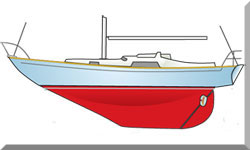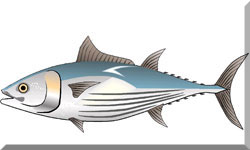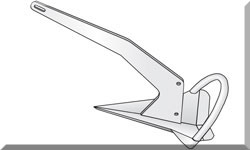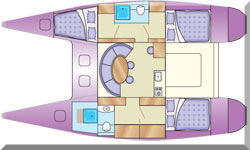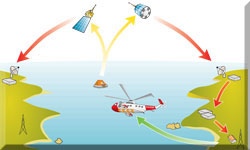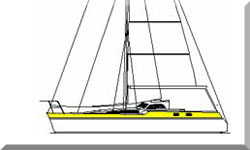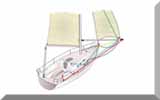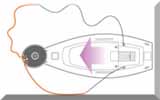Mainsail Trim & Control: A Sailor's Guide to Maximum Power
In a Nutshell: Key Takeaways
Proper mainsail trim is crucial for your sailboat’s performance, safety, and handling. An over-trimmed mainsail causes excessive heel and a heavy helm, while a well-trimmed one provides balanced performance and reduces strain on the boat and crew. Mastering the control lines—including the halyard, outhaul, mainsheet, and kicker—allows you to adjust the sail's shape and power for different wind conditions. The mainsail's design elements, such as the roach and battens, significantly impact its efficiency. Understanding how to hoist, jibe, and reef the mainsail safely is essential for any sailor.
Table of Contents
- What Are the Primary Controls for Mainsail Trim?
- How Do Battens & the Roach Affect Mainsail Performance?
- What Is a Loose-Footed Mainsail & Why Might I Consider One?
- How Do I Hoist a Mainsail Safely?
- What Is the Safest Way to Jibe the Mainsail?
- How Do I Reef the Mainsail?
- How to Read Mainsail Tell-Tales
- The Importance of the Leech Line
- Advanced Mainsail Trimming: Mastering Twist & Power
- Trimming for Different Points of Sail: Upwind & Off the Wind
- FAQ: Mainsail Trim & Control
What Are the Primary Controls for Mainsail Trim?
The mainsail is a powerful force on a sailboat, and you've got a number of control lines to shape it and keep it in check. Each one affects the sail's performance in a distinct way:
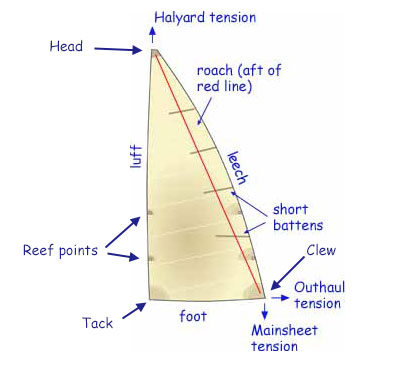 Head, clew & tack control points for trimming the mainsail
Head, clew & tack control points for trimming the mainsail- Main Halyard: This line is used to hoist the sail and tension the luff. Proper halyard tension is critical for setting the sail's draft. If it's too loose, the draft shifts aft; if it's too tight, you’ll "over-flatten" the sail, reducing power in light winds.
- Mainsail Outhaul: Located at the end of the boom, the outhaul tensions the foot of the sail. You tighten it to flatten the lower third of the sail, which is useful in strong winds to de-power it. You ease it to create more fullness for power in light winds.
- Mainsheet: The mainsheet serves two purposes. Firstly, it tensions the leech, and secondly, it controls the boom's angle relative to the boat's centreline. When you're sailing upwind, the mainsheet is your primary control for twist and overall trim.
- Kicker (or Vang): This control line pulls the boom down and is most effective when you’re sailing off the wind, when the mainsheet can no longer pull the boom down. A tight kicker flattens the sail and reduces twist, which is critical for preventing an uncontrolled mainsail in a gust.
- Cunningham: A simple but effective device on many racing and cruising boats, the Cunningham is a line that pulls down on a small eyelet just above the tack. It works with the main halyard to remove horizontal creases in the luff, moving the sail's draft forward for better upwind performance.
How Do Battens & the Roach Affect Mainsail Performance?
The roach is the section of the sail that extends beyond a straight line from the masthead to the clew, giving you a valuable increase in sail area. To support this added area and prevent the sail from flapping, battens are used. Without them, the sail's leech would be unstable and just create drag.
- Short Battens: These are common on many cruising sails. They support the roach but can cause creasing and chafe at the forward end of the batten pocket. This area is often the first to show wear and tear, and may well need repair.
- Fully Battened Mainsail: Popularised on multihulls, these sails use battens that run the full width of the sail, from the luff to the leech. They offer several advantages for cruisers: they hold their shape better in light winds, they reduce flogging when reefing, and they're less prone to chafe on the mast. The trade-off is more weight aloft and the need for special mast cars to handle the compressive loads when hoisting and lowering.
For a balance of performance and practicality, many offshore sailors opt for a system with only the top two battens being full-length. This preserves the sail's shape where it’s most critical without needing a complex and expensive mast track system.
What Is a Loose-Footed Mainsail & Why Might I Consider One?
A loose-footed mainsail is one where the foot of the sail isn't attached to a groove in the boom, but instead is only held at the tack and the clew. This arrangement is a necessity for in-mast furling systems. However, for sailors with slab reefing and lazy jacks, it offers distinct advantages:
- Enhanced Shape Control: The sail's shape extends all the way to the foot, which isn’t restricted by a boom groove.
- Easy Tension Adjustment: Foot tension can be quickly and easily adjusted, allowing you to flatten the sail more effectively in gusty conditions.
The main downside for a cruising sailor is that a loose-footed main can't be used to collect rainwater, which is a handy feature on long passages.
How Do I Hoist a Mainsail Safely?
Hoisting the mainsail can be a straightforward process with a slab reefing system. The key is to manage the boat and the gear methodically to avoid snags or damage.
- Preparation: Head the boat into the wind, maintaining just enough speed for steerageway. Slacken the kicker and mainsheet, and take the weight of the boom with the topping lift.
- Clear the Deck: Pull the lazy jacks forward to prevent them from catching the battens. Double-check that all reefing lines are clear and there are no reefs tied in.
- Hoisting: Hoist the main as far as you can by hand, then use the halyard winch to complete the hoist.
- Tensioning: Apply tension to the halyard until a light crease begins to form just aft of the luff.
- Final Steps: Release the topping lift and re-set the lazy jacks. Head off onto your desired course and trim the sail accordingly.
What Is the Safest Way to Jibe the Mainsail?
An uncontrolled jibe can be one of the most dangerous events on a sailboat, causing injury or damage to the rigging. A jibe preventer is a simple and effective safety device for sailing downwind.
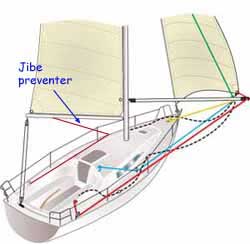 When running wing-and-wing, rigging a jibe preventer is a particularly good idea...
When running wing-and-wing, rigging a jibe preventer is a particularly good idea...A good practice is to set up a jibe preventer on both sides of the boat. I've found that a simple system works best. On my boat, Alacazam, I use a webbing strap with a stainless steel cringle at each end. It’s hitched to the boom with a clove hitch. A preventer line is then led through a block on the toe rail and back to a winch in the cockpit.
To perform a controlled jibe:
- Preparation: Ease the kicker and release the preventer line from the winch.
- Controlled Jibe: Heave in on the mainsheet until the mainsail is on the centreline as the stern moves through the wind. Once the sail is on the new side, ease the mainsheet and set your new course.
- Resetting: Pull the preventer line through the now-redundant block, reeve it through the block on the other side, and lead it to a winch. Once the boom is set, pull the boom down with the kicker, and you’re all set for the new tack.
How Do I Reef the Mainsail?
On most fractional sailboats, the mainsail is the first sail you’ll need to reef. The process will depend on whether you've got an in-boom or in-mast furling system or a traditional slab reefing setup.
Jiffy Reefing:
 A single-line reefing system to pull down both the luff and the leech
A single-line reefing system to pull down both the luff and the leechThe most common method is a single-line jiffy reefing system, which simultaneously tensions the luff and leech. While specific steps vary by boat, the principle is to head into the wind, hoist the sail slightly to release the tack, pull in the reefing line to a new position, and then re-tension the halyard and outhaul. The result is a smaller, more manageable sail area for stronger winds.
How to Read Mainsail Tell-Tales
Tell-tales are small pieces of yarn or ribbon placed on both the leeward (downwind) and windward (upwind) sides of the mainsail. They’re your visual key to understanding the airflow over the sail and are essential for fine-tuning trim.
- Upwind Tell-Tale: If the tell-tale on the windward side of the sail is fluttering or pointing aft, it indicates that the airflow is stalled. This means the sail is over-trimmed. To correct this, ease the mainsheet or adjust the traveller to reduce the angle of attack.
- Downwind Tell-Tale: If the leeward tell-tale is fluttering, it means the sail is luffing, or not filled with enough wind. The sail is under-trimmed. To fix this, sheet in or pull the traveller up until the leeward tell-tale is streaming straight back.
- Perfect Trim: When both tell-tales are streaming straight aft, the airflow is attached and smooth on both sides of the sail, indicating optimal trim and maximum power.
The Importance of the Leech Line
The leech line is a small, thin line or cord sewn into the trailing edge of the mainsail. Its simple yet vital purpose is to control the tension of the leech, the very back edge of the sail. If the leech is flapping or fluttering in the wind, it creates drag and an annoying noise. By gently pulling on the leech line, you can remove this flutter, smooth the airflow, and increase efficiency. Just be careful not to over-tension it, as this can create a hooked leech that chokes the airflow. You want just enough tension to stop the flutter.
Advanced Mainsail Trimming: Mastering Twist & Power
Sail twist refers to the difference in the mainsail's angle between the foot and the head. It's a key factor in controlling the sail's power, especially in different wind conditions.
- Depowering in Strong Winds: In a gust, you can quickly de-power the sail by easing the mainsheet or vang. This increases the twist, allowing the wind to spill out of the top of the sail, which in turn reduces heel and weather helm.
- Maximising Power in Light Winds: In light air, you want as much drive as possible. By pulling in on the mainsheet and kicker, you flatten the sail and reduce twist. This creates a powerful, efficient airfoil that can propel the boat forward even with minimal wind.
Trimming for Different Points of Sail: Upwind vs. Off the Wind
The goals of mainsail trim change dramatically depending on your point of sail.
| Upwind Trim | Off-the-Wind Trim | |
|---|---|---|
| Primary Goal | Maximise speed and pointing ability. | Maximise projected sail area and power. |
| Mainsheet | Tight, bringing the boom close to the centreline. | Eased, allowing the boom to go out for maximum area. |
| Kicker/Vang | Used to control leech tension, keeping the top batten parallel to the boom. | Used to pull the boom down, preventing the leech from twisting off excessively. |
| Outhaul | Tightened to flatten the sail in strong winds; eased to add draft in light winds. | Eased to add fullness (draft) for maximum power. |
To fully understand the theory behind sail trim and how each sail works in harmony, consider expanding your knowledge with a more comprehensive overview in our A Guide to Sailboat Sails: Powering Your Passage article.
This article was written by Dick McClary, RYA Yachtmaster and author of the RYA publications 'Offshore Sailing' and 'Fishing Afloat', member of The Yachting Journalists Association (YJA), and erstwhile member of the Ocean Cruising Club (OCC).
FAQ: Mainsail Trim & Control
What is the primary purpose of a mainsail on a sailboat?
What is the primary purpose of a mainsail on a sailboat?
The mainsail, together with the jib, is the principal sail that creates the aerodynamic lift to propel a sailboat, especially when sailing upwind.
How do I know if my mainsail is trimmed correctly?
How do I know if my mainsail is trimmed correctly?
When a mainsail is trimmed correctly, the boat will feel balanced, the helm will be light, and you'll be making good speed. Incorrect trim, such as an over-sheeted sail, will result in excessive heel and a heavy, "gripping" helm.
Can a mainsail be used for propulsion without a jib?
Can a mainsail be used for propulsion without a jib?
Yes, a mainsail can be used on its own for propulsion, particularly when sailing downwind or on a beam reach. However, for efficient upwind sailing, the interaction between the mainsail and jib is necessary to generate optimal lift.
What is the difference between a battened and a hollow-leech mainsail?
What is the difference between a battened and a hollow-leech mainsail?
A battened mainsail has a roach supported by fibreglass or wooden battens to increase sail area. A hollow-leech sail has a concave leech line with no battens. While less powerful, they are simpler and require less maintenance.
What is the purpose of the Cunningham?
What is the purpose of the Cunningham?
The Cunningham is a control line that pulls down on the luff of the sail, effectively tensioning it and moving the draft forward. This is particularly useful in strong winds to de-power the sail without having to adjust the halyard.
Resources Used:
North Sails, "Mainsail Trim," [Link: https://www.northsails.com/sailing/articles/mainsail-trim-a-guide]
Quantum Sails, "Sail Trim 101: Mainsail Trim," [Link: https://www.quantumsails.com/en/resources/sail-trim-101/mainsail-trim]
American Sailing Association, "How to Reef a Mainsail," [Link: https://asa.com/news/2021/04/09/how-to-reef-a-mainsail/]
Royal Yachting Association (RYA) training materials, RYA Yachtmaster Handbook.
Personal experience and knowledge as an RYA Offshore Yachtmaster and a member of the YJA.
Recent Articles
-
Planning Your Sailboat Liveaboard Lifestyle: An Ocean Sailor's Guide
Dec 06, 25 05:18 AM
Seasoned sailors share their methodical risk analysis for planning a secure Sailboat Liveaboard Lifestyle, covering financial, property, and relationship risks. -
Marine Cabin Heaters: The Expert’s Guide to Comfort & Safety at Sea
Dec 05, 25 06:52 AM
Choose the best Marine Cabin Heaters for your vessel. Expert advice on diesel, paraffin, and hot water systems for year-round cruising comfort. -
Marine Water Heating Systems: Free Hot Water from Your Boat's Engine
Dec 03, 25 05:06 PM
Tap into your engine's heat to get free hot water on board. An experienced ocean sailor's guide to marine water heating systems, calorifiers & safety.


